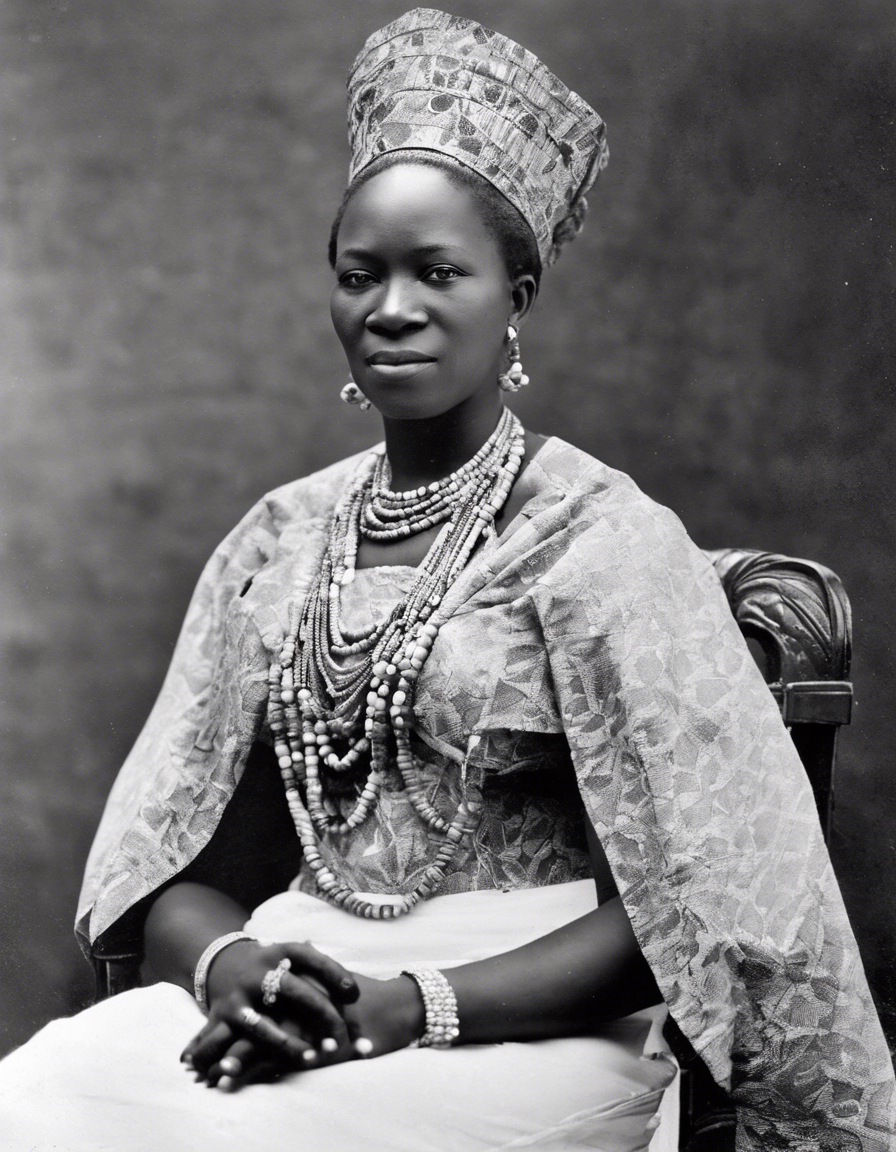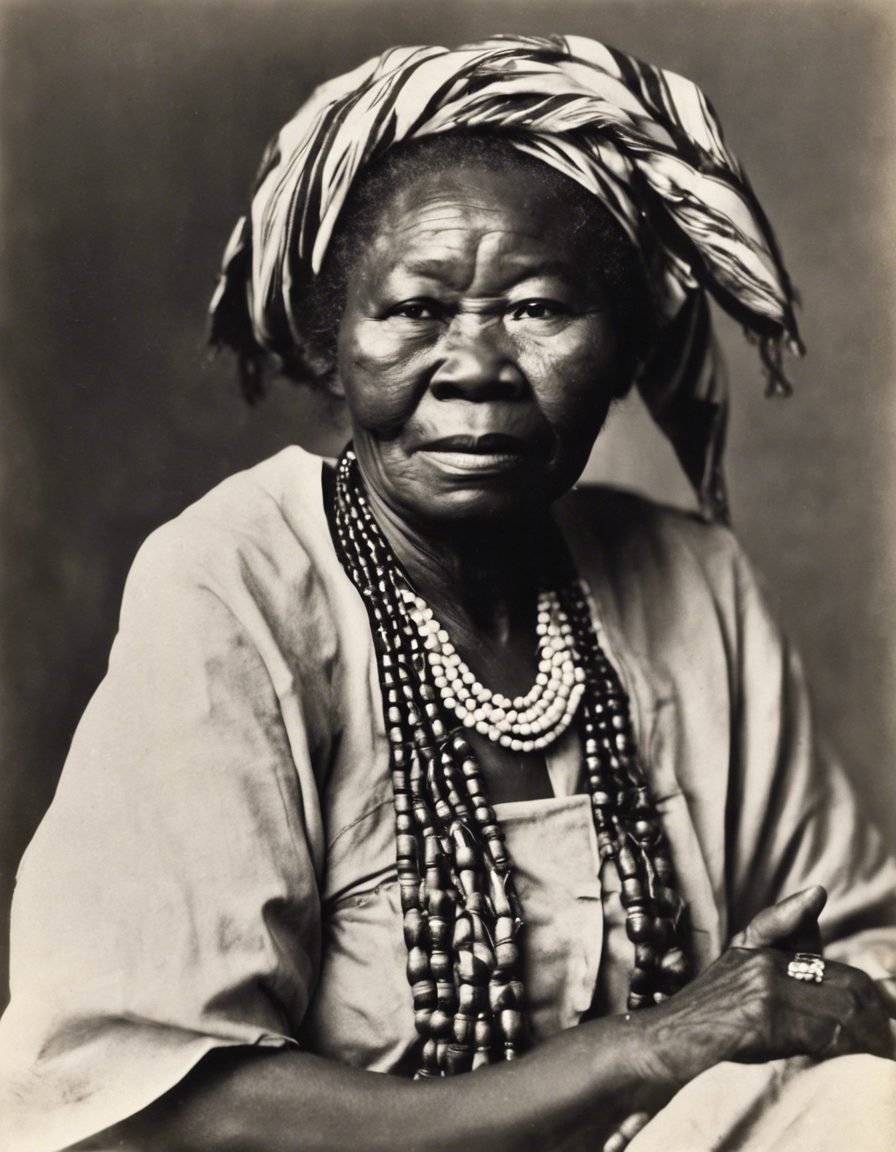In my research on Madam Yoko, also known as Mammie Yoko, I uncovered two captivating stories. The first one captivated me with its robust evidence and rich details that conjured a clear image in my mind. The characters were multifaceted and fascinating, their motives and deeds wrapped in the enigma of Sierra Leonean lore. It was as if I could sense the dusty scent of old manuscripts and feel the heft of proof burdening my shoulders. As I delved deeper, I encountered a second story, akin to a sinister shadow poised to emerge from obscurity.
Initially, I regarded it as mere conjecture, a whimsical story crafted by those eager to dispute the prevailing account. Yet, delving deeper, I encountered an eerily credible alternative. The characters in this rendition were even more mysterious, their tales veiled in secrecy. Both accounts captivated me, each with its own allure. I found myself divided, with no way to conclusively validate or refute either. It was then I appreciated the real allure of these stories—they invited interpretation, sparking infinite debates and dialogues. I would have to hear your version of this narrative.
The characters seemed to be calling out, challenging us to solve their enigma and reveal their hidden truths. One thing was certain: these stories stirred a range of emotions, from excitement to curiosity, casting a shadow of unease. The characters and their narratives were so intricate and compelling that I found myself deeply connected to their destinies. As I share my discoveries, I invite you to consider these stories with an open mind. Allow yourself to be drawn into these realms where anything can happen and reality is often a puzzle. Let these characters and their adventures spark a flame within you, enlivening your senses and provoking spirited discussions for years to come. Here are my findings.
FIRST NARRATIVE – Mammie Yoko, a traditional figure from Sierra Leone, was celebrated for her extraordinary beauty. Her skin was as dark and lustrous as ebony, complemented by her distinctive facial features. Her full figure, with ample bosom and wide hips, was seen as ideal for childbearing and distinguished her further. Her clothing was a bold expression of her identity. Yoko’s uniqueness went beyond her looks; her talents were multifaceted. In researching her history, I encountered two conflicting narratives. According to one, she was born in the Gbo Chiefdom and lived from 1849 to 1906.
According to historical accounts, she was a distinguished figure within the Mende community, serving as both a leader and the Queen of Senehun. Yoko played a significant role in the secretive Bondo society and was recognized as an adept warlord who substantially expanded the Mende kingdom. These accounts indicate that she ultimately became the leader of the Kpa-Mende Confederacy. It is noted that Madam Yoko, as she was occasionally known, adopted her name from Soma during her initial Bondo Secret Society ceremony, which brought her widespread acclaim as a dancer. Her marriage to Gongoima, however, ended in failure.
Yoko became the consort of Taiama chief Gbenjei through remarriage, which brought her widespread recognition and financial security. Sadly, the influential Gbenjei passed away. Yoko, known for her beauty, then married her third husband, Gbanya Lango. However, Lango was arrested in Taiamawaro by the British colonial forces in 1875. Yoko personally petitioned Governor Samuel Rowe for Lango’s release, which was granted soon after. Grateful for his freedom, Lango honored Yoko by making her his royal wife.
Yoko’s enduring influence as a mediator and ambassador for the Gbanya Lango established her reputation within the Bondo secret society and especially among the Mende people. After her third husband’s death, she became the chief of Senehun in 1878. By 1884 (or 1885, as her tombstone indicates), the British colonial authorities formally recognized her as the Queen of Senehun, securing her place in Sierra Leone’s history. Her life ended tragically in 1906, possibly by her own hand. Since December 3, 2016, her gravesite in Moyamba has been honored as a national monument, reflecting her lasting impact. This is the concise story of Madam Yoko.
SECOND NARRATIVE – The second account portrays Madam Yoko in her later years, endowed with physical attributes, personality, and a charm described as breathtaking, stunning, lovely, striking, sophisticated, radiant, captivating, alluring, and enchanting. She is considered graceful and refined, exuding composure and elegance. According to this source, she moved with a natural and effortless allure. Most importantly, it was her confidence and charisma that stood out, creating a magnetic presence that attracted many to her. In this narrative, Madam Yoko is also recognized as a prominent historical figure in Sierra Leone.
She was known as the spouse of Bai Bureh, the distinguished leader of the Temne people who spearheaded a revolt against colonial rule in the late 19th century. During the Hut Tax War of 1898, Mammie Yoko supported her husband steadfastly. She was instrumental in garnering community support to oppose the imposition of British colonial tax laws. This war marked a significant uprising against British governance in Sierra Leone, with Bai Bureh and his warriors engaging in fierce combat with British troops. Mammie Yoko’s active participation in the resistance movement rendered her an emblem of courage and endurance.
Endowed with courage and leadership, she stood out during a challenging period of colonial dominance in Sierra Leone. Regrettably, today, few remember her birthplace. Known for her warmth and compassion, she extended kindness and empathy to all. Her actions during the Hut Tax War suggest a keen intellect. Her conversations were captivating and thought-provoking. Moreover, she was fashionable, exuding elegance with every step. Beyond her physical grace, she radiated inner beauty, characterized by a generous heart, an optimistic outlook, and a lively sense of humor.
HER CONTRIBUTIONS INCLUDED:
1. Mobilizing Support: Mammie Yoko effectively rallied the community to support her husband, Bai Bureh, in opposing the oppressive taxation policies of the British Crown Authorities. She was pivotal in uniting and garnering support for the meaningful rebellion. Madam Yoko became a living legend.
2. Exercising Leadership: Mammie Yoko provided strong leadership and guidance during the tumultuous period in Sierra Leone. Her presence and influence were a source of inspiration and motivation for many others to stand against British colonial oppression. Her loyalty to her people is what stands out.
3. Symbol of Defiance: The recurring theme was that the people didn’t want colonization. Mammie Yoko became a powerful symbol of defiance and bravery for the people. Her actions and support for the rebellion ignited a sense of solidarity and purpose in the community’s fight against the British forces.
4. Upholding Heritage: Mammie Yoko’s involvement in the resistance movement also played a crucial role in preserving and upholding the cultural integrity of her people in the face of colonial encroachment.
No photographic evidence or thorough depictions of Mammie Yoko’s physical attributes can be found in historical records. As a prominent figure of the late 19th century, when photography was less widely available, visual representations such as Mammie Yoko are scarce. Due to the lack of details about her appearance in historical records, providing a specific description of her physical features is thought-provoking. She safeguarded the identity and heritage of her community during a time of external pressure. Overall, Mammie Yoko’s unwavering dedication and leadership greatly aided the people in their struggle against colonial rule, and her legacy continues to be revered in Sierra Leonean history today.
We only know her by the name “Mammie Yoko.” Her full name, including any additional titles she may have had, is undocumented. In the historical records and literature I’ve accessed that mention her, she is only identified as Mammie Yoko or Madam Yoko. Her birth date is undocumented. Due to the limited availability of detailed information, providing a specific answer to when Mammie Yoko was born is challenging. However, she was a prominent figure in Sierra Leone during the late 19th century. There is also a need for more details concerning the precise count of offspring Mammie Yoko bore.
In this second narrative, they have yet to find comprehensive information regarding the circumstances surrounding Mammie Yoko’s passing. In this second narrative, it is believed that she died after her husband, Bai Bureh, was captured and exiled as a result of the Temne rebellion’s defeat against the British colonial forces. It remains unclear whether Madam Yoko’s death occurred during the conflict or in the years following Bai Bureh’s exile to Ghana. Unfortunately, historical records are scant. Nonetheless, her legacy endures as a brave and influential figure in the history of Sierra Leone, and she is revered for her pivotal role in the resistance movement against colonialism during the late 19th century.
Mammie Yoko is celebrated and remembered in Sierra Leone for her significant role in history, with various tributes bearing her name… There you have it. Which narrative is the truth? I encourage you to bring this up for discussion among your peers.

